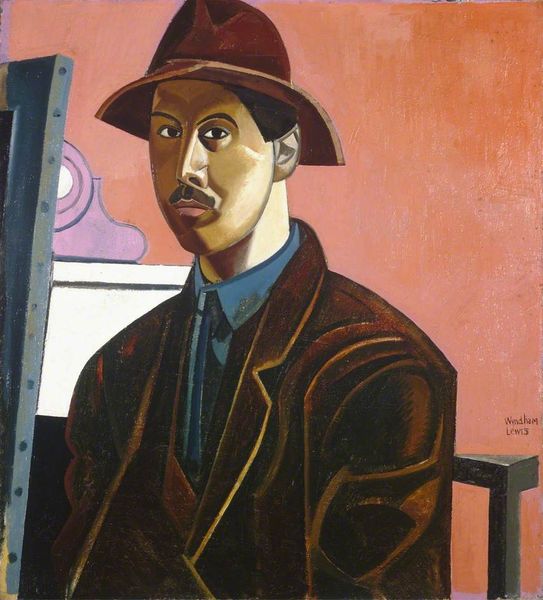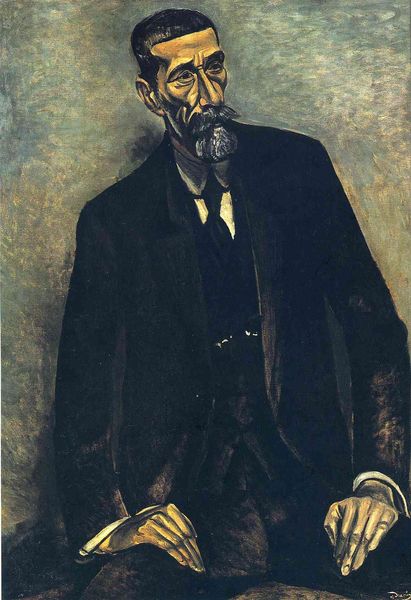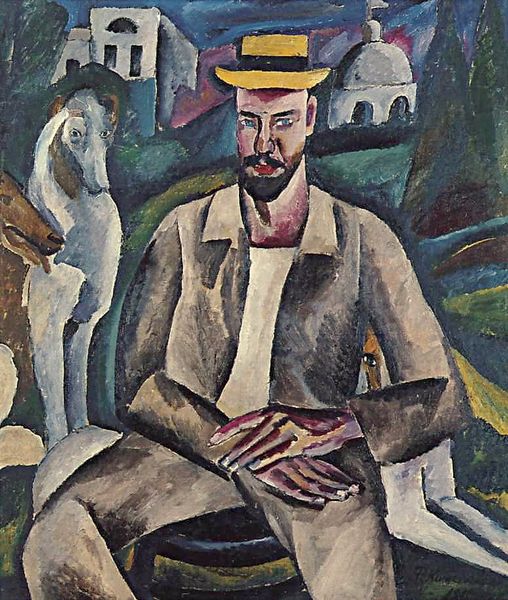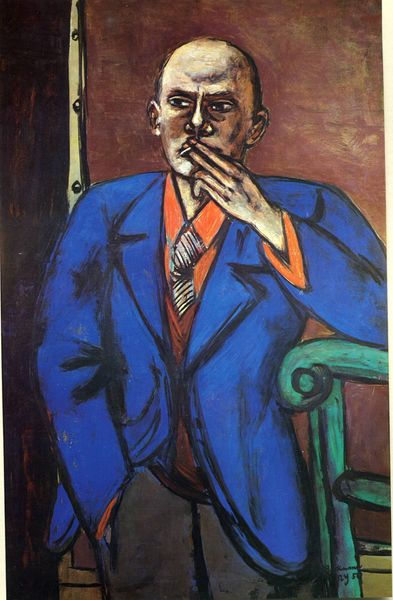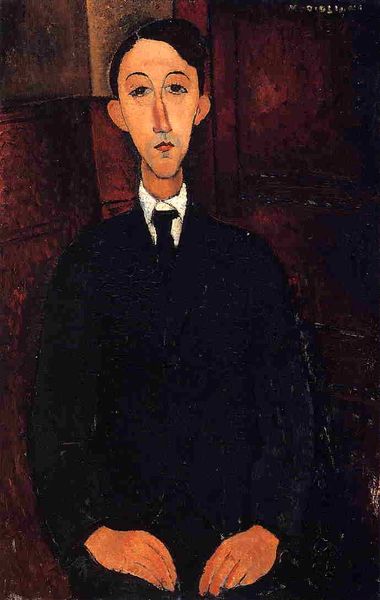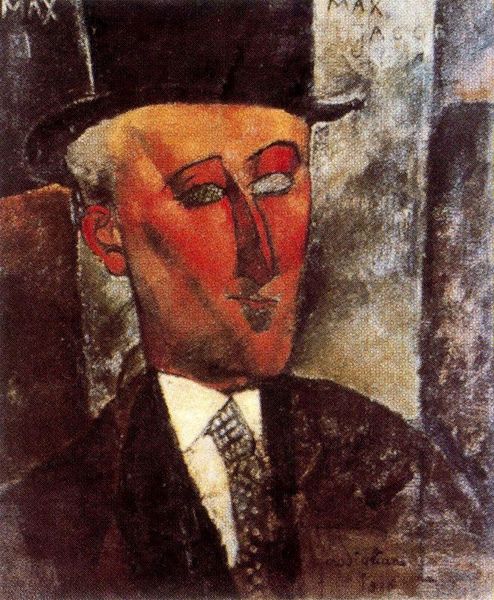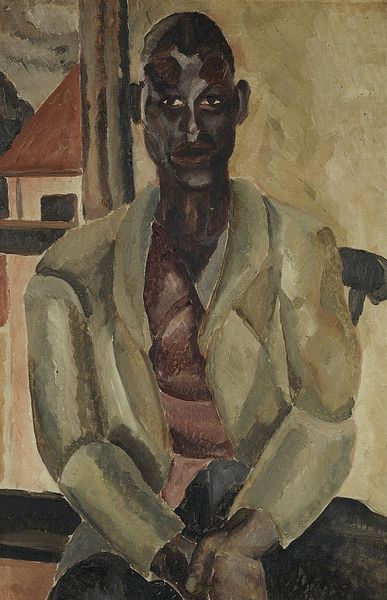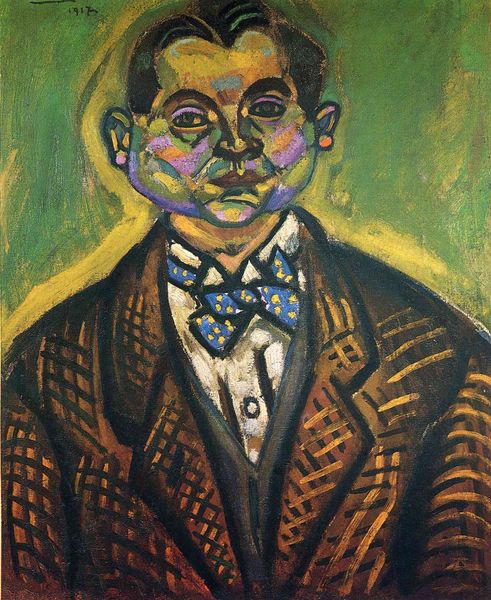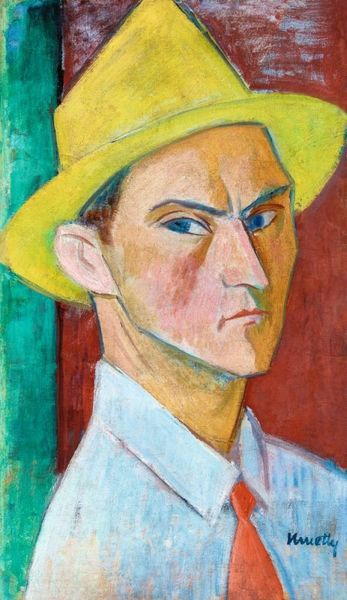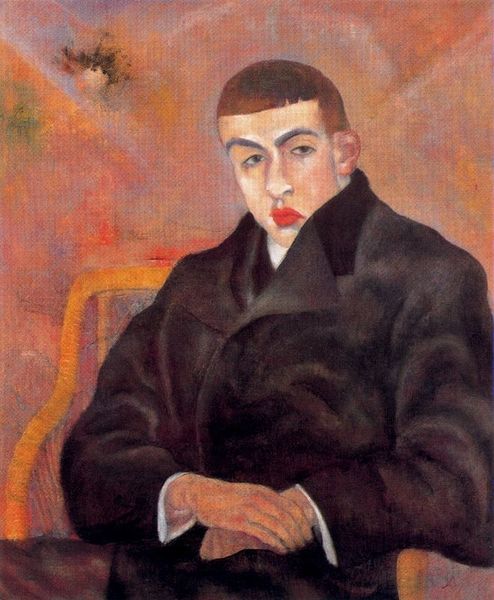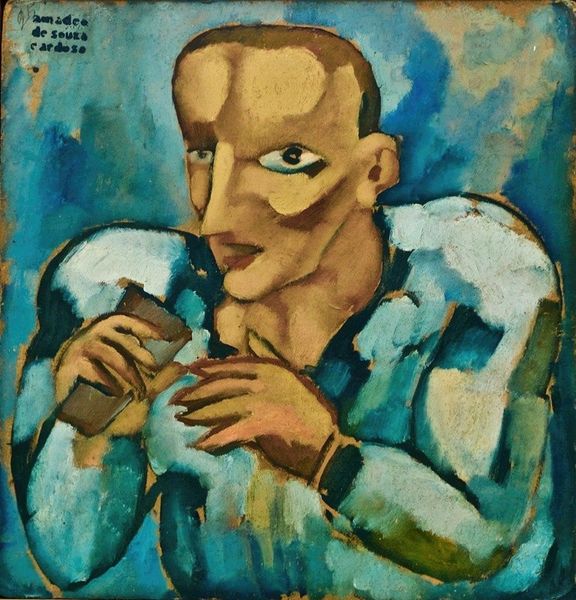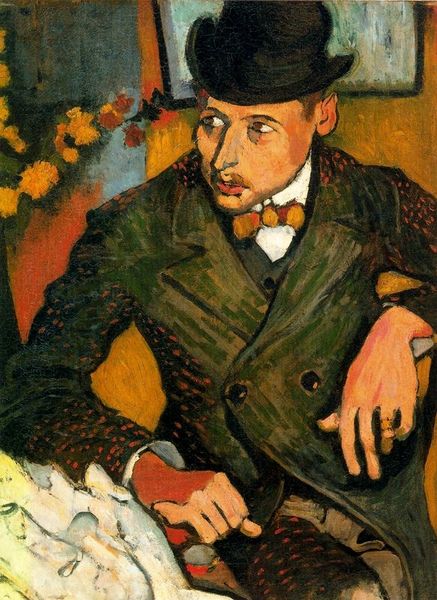
Copyright: Public domain US
Curator: The mood is striking. An unsettling yet refined, melancholic air pervades this portrait. Editor: I agree, there's a peculiar blend of elegance and unease. This is Jean Hugo’s “L'homme à la pâquerette,” or "Man with a Daisy," painted in 1921, using oil on canvas. Immediately, I notice the direct gaze—almost confrontational. Curator: Yes, the eyes—pools of disquiet! And that elongated nose gives his face a noble, yet somewhat distorted appearance. Editor: It speaks to the symbolism prevalent at the time, the subtle anxieties after the first World War as a part of a search for spiritual solace within a fractured social landscape. The daisy itself seems almost a fragile token amidst the harshness. It draws the eye, the white purity against the darkness. Curator: I see it as a connection to a pre-industrial arcadia. Daisies are commonplace flowers, associated with the countryside, with simplicity, with the natural world. The contrast with his formal attire elevates that humble flower to some sort of meaningful symbol. Editor: I would suggest there may be some class critique embedded within this opposition. He's dressed in a suit, and yet there's a certain weariness about him that hints that wealth alone may not be the savior that has been touted for so long. Curator: Very perceptive. And let’s not forget the symbolic weight associated with flowers since the Renaissance, each with layers of specific meanings, from purity to innocence, a visual vocabulary now deeply embedded in the subconscious of the Western world. That daisy becomes not just a flower, but a key. Editor: Hugo here certainly invites us to unlock what secrets lie beneath that rigid posture, behind that dapper suit and haunting stare. A fascinating, multi-layered commentary. Curator: Indeed. Looking at the artist’s technique through the symbolism present makes for a compelling portrait of its time. Editor: This portrait resonates deeply, reflecting social unrest in the aftermath of the first world war and hinting at the fragility of innocence and inherent loss of peace. It’s a piece that stays with you.
Comments
No comments
Be the first to comment and join the conversation on the ultimate creative platform.
